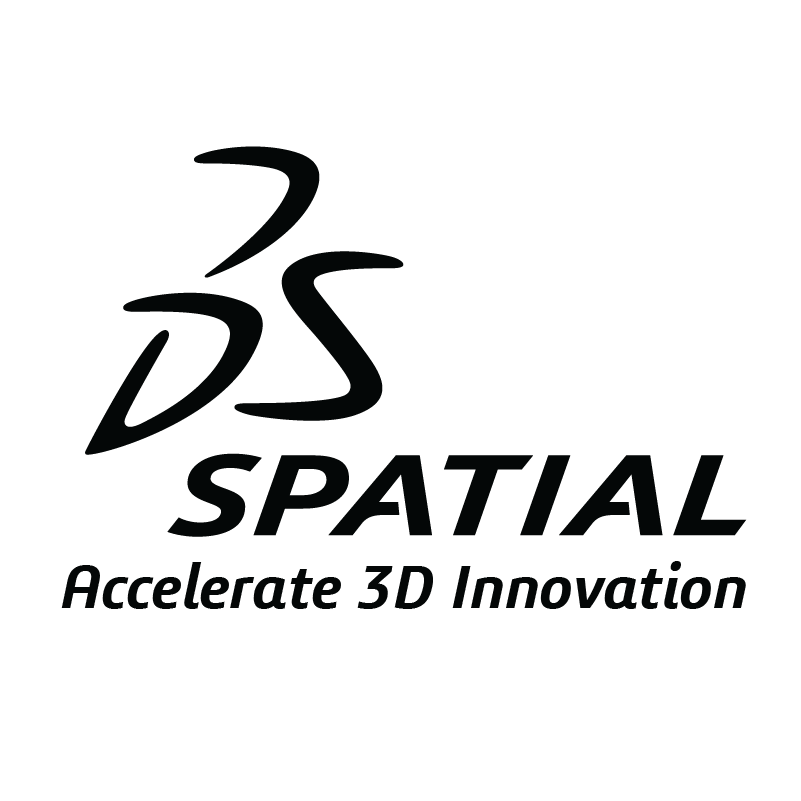SPATIAL ANNOUNCES NEXT GENERATION 3D SOFTWARE DEVELOPMENT TOOLKITS – A UNIFIED PORTFOLIO DELIVERING INCREASED CAPABILITIES AND ROBUSTNESS
Solving Industry Challenges In More Effective And Efficient Ways
Broomfield Colo., September 15, 2015 – Spatial Corp, the leading provider of 3D software development toolkits for design, manufacturing, and engineering solutions, announced today the 2016 1.0 release of CGM™Core Modeler, 3D ACIS® Modeler, and 3D InterOp™. This latest release was driven by the demand to address increasing technology challenges such as cloud enablement, multi-CAD mixed environment support, and 3D printing. The 2016 1.0 portfolio includes the industry’s first hybrid modeling solution allowing integration of both polygonal and precise data. Also contained within this release is the enhanced and extended support for multi-CAD environments, plus integration of 3DEXPERIENCE Platform technology with 3D ACIS Modeler as part of a unified portfolio.
In today’s competitive environment, delivering robust solutions quickly is critical to success. Spatial continues to support customers with a unified portfolio, improving the ease of use, and simplifying the process to adopt 3D software development toolkits. This unified portfolio includes integration of the 3D ACIS Modeler and Constraint Design Solver (CDS), additional integration for visualization, providing seamless implementation of HOOPS Visualize with Spatial’s 3D modeling technologies, as well as continued integration to improve data translation results. The alignment of technologies is also reflected through a unified naming convention. Delivering a consistent naming framework reinforces the integration and compatibility of Spatial’s technology across the portfolio.
“There are many changes happening in the industry today; technology enablers like cloud, mobile and 3D Printing, as well as new business models, forms of investment and growth, and company expansion into non-traditional markets. We recognize these shifts and continue to drive solutions to enable our customers to stay on top of these trends,“ stated Linda Lokay, Vice President Marketing & Alliances Spatial Corp. “This latest release focuses on key technology challenges for additive and subtractive manufacturing, analysis, and cloud mobility. Our 2016 1.0 release delivers enhancements and unification of our existing portfolio. We are also expanding upon traditional 3D B-rep modeling by offering CGM Polyhedra™, a fully integrated polyhedral extension of Dassault Systèmes technology.”
New Products
CGM Polyhedra™ – With this release CGM Polyhedra is an add-on to the 3D ACIS Modeler combining the power of polyhedral and B-rep modeling. Utilizing the same interfaces that 3D ACIS Modeler users are already familiar with, existing and new customers can rapidly integrate approximated polyhedral data to their 3D printing, subtractive manufacturing, analysis, and many other workflows.
Key Technology Updates
Feature recognition – CGM Core Modeler provides comprehensive, inherent feature recognition, including holes and fillets. Users are able to improve their processes by extracting these features and optimizing the manufacturing paths.
Increased performance and ease of use – Spatial continues to iterate upon the 3D ACIS Modeler, including new failsafe operations, enhanced Boolean capabilities, improved checking, and healing functions, as well as powerful stitching capabilities. These new features and functionality enable users to optimize their workflows.
Next generation CGM HLR – Supported with both CGM Core Modeler and 3D ACIS Modeler for use in a wide range of applications, including engineering, architecture, and manufacturing, CGM Hidden Line Removal (HLR) enables users to rapidly produce high quality hidden line views, engineering drawings, and technical illustrations. CGM HLR provides rapid, reliable results even on large and complex models, and provides the tools and configurability to adjust the result accuracy and behavior.
Extended CAD data support and new capabilities – Quality, accuracy, and robustness are required to meet the demands of multi-CAD environments. Users are able to access data for system automation, bridge the gap between engineering disciplines, and as newly released software updates become available, they are able to easily keep their systems current. For a list of support CAD formats, visit: spatial.com/products/3d-interoperability
Spatial Corp, a Dassault Systèmes subsidiary, is the leading provider of 3D software development toolkits for technical applications across a broad range of industries. Spatial 3D modeling, 3D visualization, and CAD translation software development toolkits help application developers deliver market-leading products, maintain focus on core competencies, and reduce time-to-market. For over 25 years, Spatial 3D software development toolkits have been adopted by many of the world's most recognized software developers, manufacturers, research institutes, and universities. Headquartered in Broomfield, Colorado, Spatial has offices in the USA, Germany, Japan, China, and the United Kingdom. For more information, visit www.spatial.com.
About Dassault Systèmes
Dassault Systèmes, the 3DEXPERIENCE Company, provides business and people with virtual universes to imagine sustainable innovations. Its world leading solutions transform the way products are designed, produced, and supported. Dassault Systèmes’ collaborative solutions foster social innovation, expanding possibilities for the virtual world to improve the real world. The group brings value to over 190,000 customers of all sizes, in all industries, in more than 140 countries. For more information, visit www.3ds.com.
CATIA, SOLIDWORKS, ENOVIA, DELMIA, SIMULIA, GEOVIA, EXALEAD, 3D VIA, 3DSWYM, BIOVIA, NETVIBES, 3DXCITE are registered trademarks of Dassault Systèmes or its subsidiaries in the US and/or other countries.
ACIS, 3DScript and SAT are registered trademarks of Spatial Corp. Other brand and product names are trademarks of their respective owners. Copyright © 2015 Spatial Corp.

